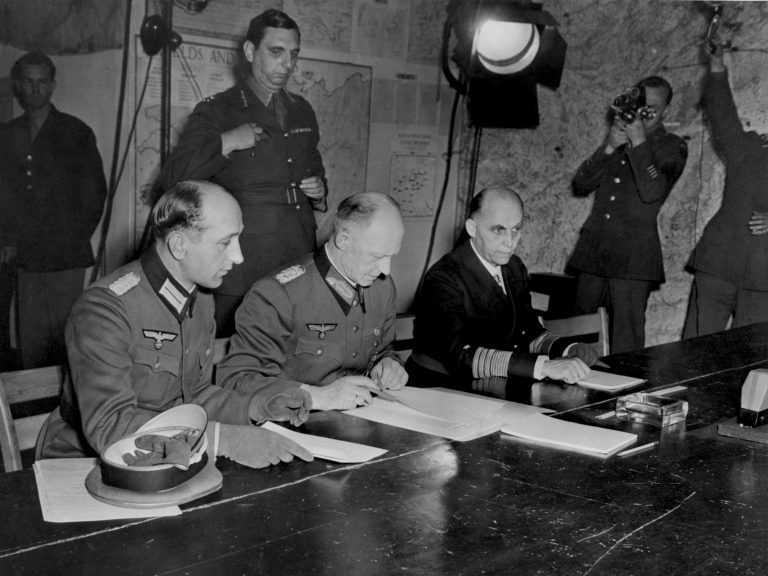On May 7th, 1945, a momentous event took place that would forever alter the course of history – the signing of the surrender documents that marked the end of the European phase of World War II. A German delegation, led by General Alfred Jodl, traveled to U.S. General Dwight D. Eisenhower’s headquarters in Reims, France, to formally surrender to the Allied forces.
The surrender of Nazi Germany was the culmination of years of fierce fighting, untold suffering, and unimaginable loss on both sides of the conflict. For millions of people across Europe, the signing of the surrender documents represented a glimmer of hope in a world ravaged by war and devastation.
The journey to the signing of the surrender documents was fraught with tension and uncertainty. As Allied forces closed in on Germany from all sides, the once-mighty Nazi war machine began to crumble under the weight of relentless Allied pressure. With Allied troops advancing on Berlin and the Soviet Red Army closing in from the east, it became increasingly clear that the end was near for Hitler’s Third Reich.
In a last-ditch effort to stave off total defeat, German authorities sought to negotiate a surrender with the Allied forces. On May 6th, 1945, General Jodl was dispatched to General Eisenhower’s headquarters in Reims, France, to begin discussions on the terms of surrender.
The negotiations that followed were tense and fraught with uncertainty. General Jodl, representing the crumbling remnants of the German High Command, faced off against General Eisenhower, the Supreme Commander of the Allied Expeditionary Force, and his team of Allied officers.
After hours of intense discussions, an agreement was reached, and the surrender documents were prepared for signing. In the early hours of May 7th, 1945, General Jodl affixed his signature to the documents, officially surrendering all German forces on land, at sea, and in the air to the Allied forces.
The signing of the surrender documents in Reims was a moment of profound significance – not only for the Allied forces who had fought tirelessly for victory, but also for the people of Europe who had endured years of hardship and suffering under Nazi rule. The end of the European phase of World War II brought a sense of relief and liberation to millions of people across the continent, signaling the dawn of a new era of peace and reconstruction.
In the days and weeks that followed the signing of the surrender documents, celebrations erupted across Europe as people rejoiced in the defeat of Nazi tyranny and the prospect of a brighter future. The surrender of Germany marked the beginning of the end of World War II in Europe and paved the way for the eventual defeat of Japan in the Pacific theater.
Today, the signing of the surrender documents in Reims stands as a powerful symbol of the triumph of freedom over tyranny, and the enduring spirit of resilience and courage in the face of adversity. As we commemorate this historic event, let us honor the sacrifices of all those who fought and died for the cause of freedom, and rededicate ourselves to the pursuit of peace and justice in the world.












What do you think?
It is nice to know your opinion. Leave a comment.